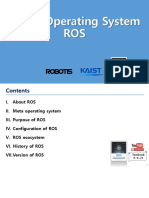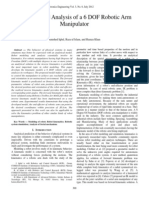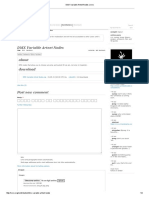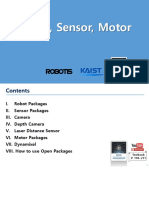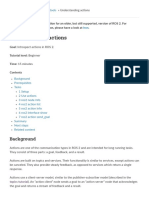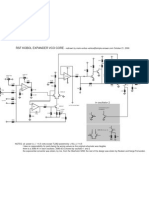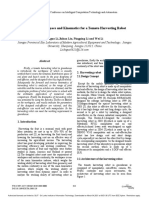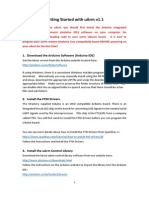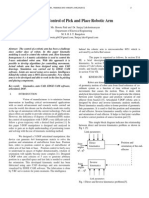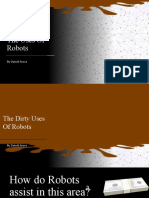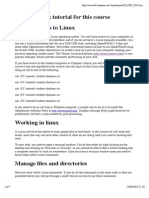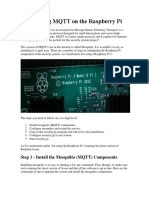0% found this document useful (0 votes)
122 views7 pagesRobot Operating System (ROS)
Robot Operating System (ROS) is a general purpose mechanism that provides unified protocols for reusable robot modules. It allows developers to focus on robot logic rather than recreating basic functions. ROS uses nodes, messages, topics, and services to allow loose coupling between modules. It also includes Gazebo, a 3D simulator compatible with ROS that can be used to test robot models in virtual worlds and simulate robot physics.
Uploaded by
MuaathCopyright
© © All Rights Reserved
We take content rights seriously. If you suspect this is your content, claim it here.
Available Formats
Download as PPTX, PDF, TXT or read online on Scribd
0% found this document useful (0 votes)
122 views7 pagesRobot Operating System (ROS)
Robot Operating System (ROS) is a general purpose mechanism that provides unified protocols for reusable robot modules. It allows developers to focus on robot logic rather than recreating basic functions. ROS uses nodes, messages, topics, and services to allow loose coupling between modules. It also includes Gazebo, a 3D simulator compatible with ROS that can be used to test robot models in virtual worlds and simulate robot physics.
Uploaded by
MuaathCopyright
© © All Rights Reserved
We take content rights seriously. If you suspect this is your content, claim it here.
Available Formats
Download as PPTX, PDF, TXT or read online on Scribd
/ 7


